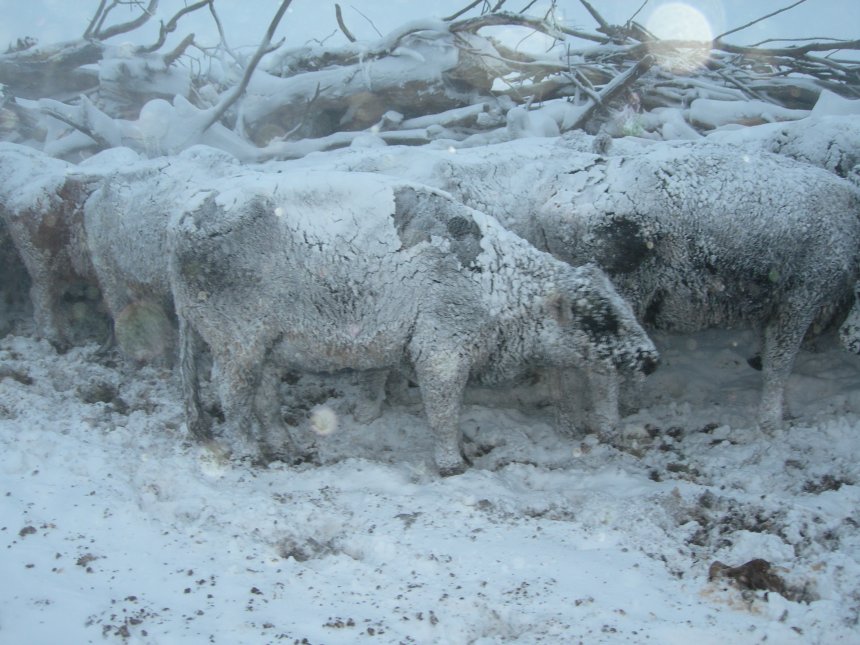
By Jay Parsons, UNL Biosystems Economist and Jim Jansen, Nebraska Extension Educator
The Agricultural Act of 2014 reauthorized retroactively to October 1, 2011 and extended indefinitely four disaster assistance programs: the Livestock Forage Disaster Program (LFP); the Livestock Indemnity Program (LIP); the Emergency Assistance for Livestock, Honey Bees, and Farm-Raised Fish Program (ELAP); and the Tree Assistance Program (TAP). On April 15, 2014, producers began enrolling in these programs for qualified 2012-2014 losses. This article will focus on the LIP.
As of December 1, 2014, over $73.5 million had been paid out nationwide to cover 2011-2014 documented losses under the LIP. Nebraska producers had received over $6.3 million as of that date with over $5 million attributed to 2013 losses and over $1 million attributed to 2014 losses. It is important for producers to understand that these disaster programs have been extended indefinitely. Therefore, the importance of keeping proper livestock records has never been greater. Documentation requirements for livestock deaths that occurred Oct. 1, 2011, through Dec. 31, 2014 were relaxed from the rules due to the retroactive nature of the reauthorization. Producers need to commit now to keeping good records for possible future loss claims and request for payments in 2015 and beyond.
LIP Basics
LIP is administered by the Farm Service Agency (FSA) of the U.S. Department of Agriculture (USDA). It provides compensation to eligible livestock producers who have suffered livestock death losses in excess of normal mortality due to adverse weather. It also covers attacks by animals reintroduced into the wild by the federal government or protected by federal law, including wolves and avian predators. Eligible livestock includes beef cattle, dairy cattle, bison, poultry, sheep, swine, horses, and other livestock as determined by the U.S. Secretary of Agriculture. The LIP payment rates are based on 75 percent of the market value of the livestock. For example, 2014 payment rates for adult beef cows was $1,223.45 per head. Payment rates for all species are published in the LIP factsheet from FSA. The most current version of this factsheet is available online at http://www.fsa.usda.gov by selecting Disaster Assistance Programs from the Programs and Services dropdown menu item and then selecting Livestock Indemnity Program (LIP) from the related topics box.
Applying for LIP Payments
To be eligible for LIP, a livestock producer must have legally owned the eligible livestock on the day the livestock died or, for poultry and swine contract growers, a written contract grower agreement and possession of the eligible livestock on the day of death.
Producers should submit applications to receive LIP benefits to their local FSA office. For losses occurring Oct. 1, 2011 to Dec. 31, 2014, the final date to submit an application for payment was Jan. 30, 2015. For 2015 and subsequent years, the notice of loss must be submitted to FSA the EARLIER of: 30 calendar days of when the loss of livestock is apparent to the producer, or; 30 calendar days after the end of the calendar year in which the loss of livestock occurred.
Supporting documents must show evidence of loss, current physical location of livestock in inventory, and location of the livestock at the time of death. LIP applicants must provide adequate proof that the eligible livestock deaths occurred as a direct result of an eligible adverse weather event or an attack by an eligible wild animal. The quantity and kind of livestock that died may be documented in a number of ways including production records, purchase records, veterinarian records, records assembled for tax purposes, and other means. A complete description of acceptable death loss documentation is available at http://www.fsa.usda.gov/Internet/FSA_File/lip_long_fact_sht_2014.pdf.
Keeping good records are an important risk management tool for producers by providing accurate, complete, neat, consistent, and historical information for better analysis, better decision making, and making application for insurance claims. A good set of records contains the right amount of detail to meet the needs and the goals of the operation. The LIP is an example of how sound financial management behavior and good documentation are rewarded by ease of access to available programs designed to help producers recover from losses resulting from risks beyond their control.
Jay Parsons
Biosystems Economist
Department of Agricultural Economics
University of Nebraska–Lincoln
jparsons4@unl.edu
Jim Jansen
Extension Educator
Cedar and Knox County Extension
University of Nebraska–Lincoln
jjansen4@unl.edu